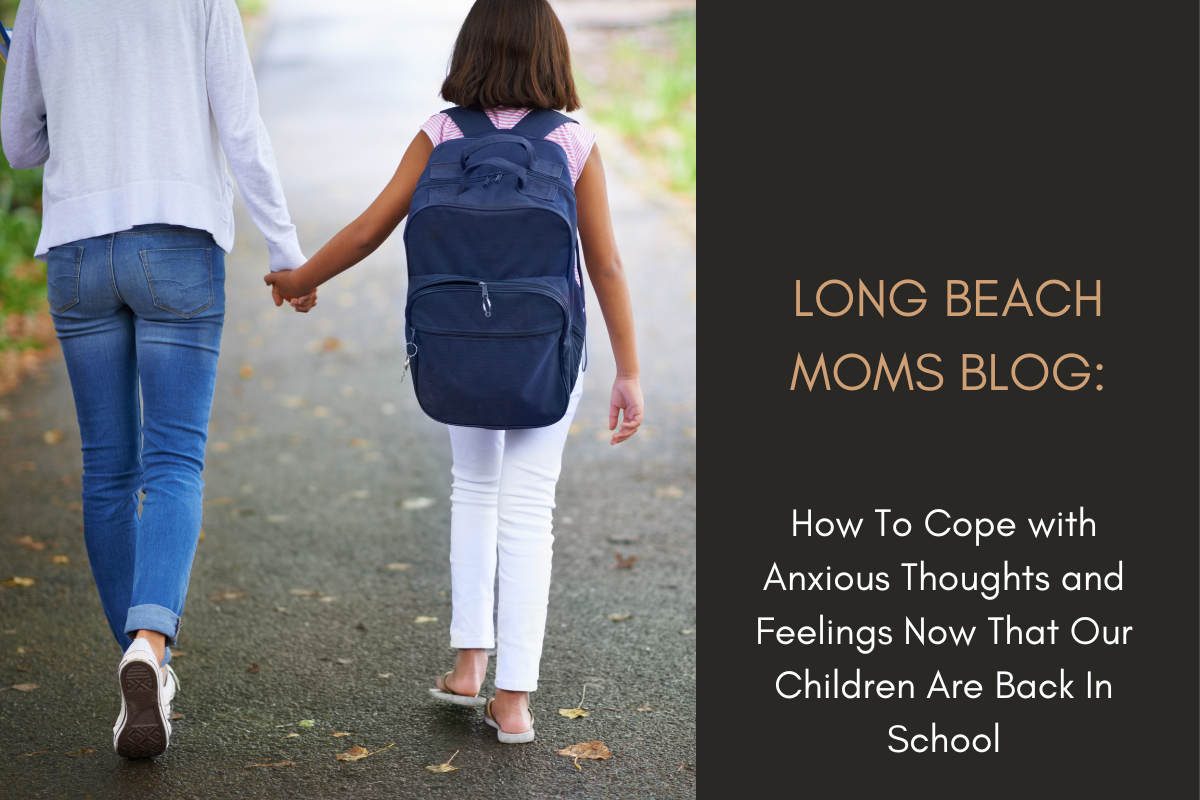How To Cope with Anxious Thoughts and Feelings Now That Our Children Are Back In School
Introduction
Our children are back at school after Winter Break, and with it comes a lot of anxiety for many parents. Are your kids ready for the next phase of the school year? Will they adjust back to their schedules? What if they’re sick? These are just some of the questions we ask ourselves as we watch our children walk off to school each day. While there’s no way to avoid all this anxiety, there are ways to cope with it so that it doesn’t take over our lives!
As a parent, you’ve probably noticed that it can be difficult to make time for yourself while also taking care of your children and other responsibilities. You might even be experiencing symptoms of stress and/or anxiety. Anxiety is a normal feeling that we all experience at one point or another in our lives. It can take many different forms: nervousness when preparing for an important presentation at work, feeling restless, financial concerns/stressors, being worried about how well your child will do in school—these are all examples of normal anxiety brought on by certain situations where we don’t feel fully prepared for what will happen next. When anxious thoughts begin to take over and impact our day-today lives, this can often be a sign that we need to slow down and start taking better care of ourselves. Cognitive Behavioral Therapy, or CBT, can be a good place to start when it comes to practicing coping skills.
What is CBT?
Cognitive behavioral therapy (CBT) is an evidence-based approach that helps people modify their thought processes to change their emotional states, which can help them cope better with anxiety.
Cognitive behavioral therapy can help you learn how to:
- Understand what’s causing your feelings and behaviors
- Recognize when you are engaging in negative thoughts or distorted thinking patterns
- Identify more helpful ways of thinking
Coping Skills
Now that you recognize your anxiety symptoms, you’ll want to learn and implement coping skills that you can use to reduce your anxiety symptoms when they occur. CBT teaches many types of skills that can help, such as:
Mindfulness
You can use mindfulness to be aware of your thoughts and feelings without judging them. Mindfulness is a way of paying attention, on purpose, to the present moment. Mindfulness can be practiced through mindful meditations, diaphragmatic breathing, and progressive muscle relaxation.
Here are some ways to practice mindfulness:
- Notice your breathing, either by focusing on your breath or by listening to it.
- Notice sounds around you. If it’s quiet, try listening for silence!
- Feel how different parts of your body feel when you sit or stand up straight—your feet as they touch the floor; how gravity pulls down on your head; how that feels compared to leaning forward and resting against something (like a table). Try this in different positions—sitting, standing up straight with hands on hips, and lying on the floor. Pay attention to what happens inside each part of your body as well as outside of it (such as any sounds that happen while changing position).
- Focus only on what is happening right now: where are you? What time is it? What are you doing right now? Who else is here with you right now? What kind of noise do you hear right now?
- Try downloading apps such as Calm or Headspace to practice guided audio meditations
Journaling
Journaling is a great way to process your thoughts and feelings. You may find that writing helps you to gain perspective, which can be especially helpful when you are feeling overwhelmed by anxious thoughts. If you’re not sure where to start with journaling, try keeping it simple: write down the things that are bothering you or things that make you happy. Often times, the act of putting pen to paper and physically writing things down can be a cathartic release. You don’t have to be an expert writer or poet—you just need to express yourself in whatever way feels most natural for you!
Self-monitoring by recognizing Cognitive Distortions
Learning to self-monitor your thoughts, feelings, and behaviors can be a great way to recognize your anxious thoughts in the moment. What are you thinking when you start to feel anxious? Are your thoughts rational or irrational? Do they make sense in the context of what is happening around you?
You can learn how to self-monitor by recognizing Cognitive Distortions, which are often seen as exaggerated and/or distorted thinking patterns. These can be unhelpful and make it difficult to deal with problems.
For example, if your child is home from school with an injury, it would not be beneficial for you to tell yourself: “I am a bad parent because my child got hurt.” This thought would likely make you feel more anxious or upset than necessary at the time.
When learning how to cope with anxious thoughts and feelings, I like to encourage clients to write down their thoughts so they can get a better understanding of what their thinking patterns are like when they get anxious. I also like to motivate clients to consider how they might change those patterns in a way that will not lead them into an emotional spiral where they are constantly feeling more and more distressed by their own negative thoughts.
Conclusion
Though CBT is not a cure-all for everyone, if these skills resonate with you and if you are interested in learning more about how CBT could work for your unique needs and goals, please reach out to a qualified therapist. I am also happy to provide a free, 15-minute phone consultation to discuss how I can help or provide a referral to a provider who can best fit your needs. Visit www.reframecounselingmft.com for more information.
Licensed Marriage and Family Therapist providing telehealth (virtual) services and based out of Long Beach, CA. Jenna specializes in anxiety, depression, working with parents of neurodivergent children, as well as adults diagnosed with ADHD later in life.
This blog is not intended as a replacement for a mental health evaluation or therapeutic treatment.





